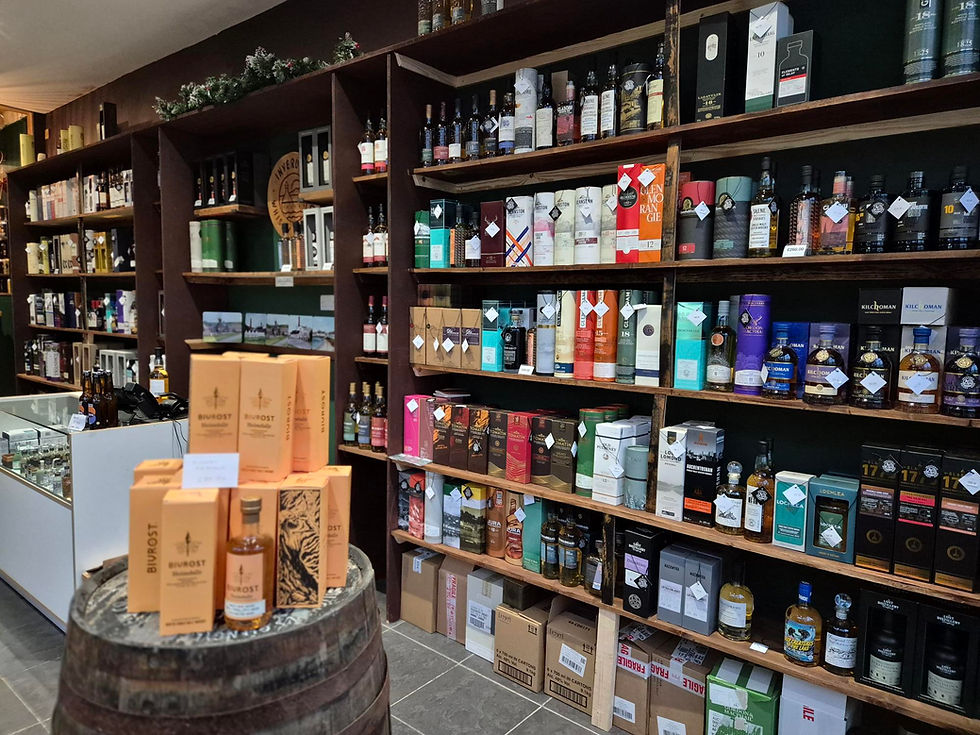- Paul Andrews

- Dec 8, 2023
- 4 min read

Researchers from UK universities are set to play a key role in developing the next generation of gravitational wave detectors, which could help astronomers probe the furthest reaches of the cosmos.
A consortium of seven British universities, led by the University of Glasgow, have secured £7m in support from the UK Research and Innovation (UKRI) Infrastructure Fund.
This fund helps to create a long-term pipeline of infrastructure investment priorities and supports the facilities, equipment and resources that are essential for researchers and innovators to do ground-breaking work.
Over the next three years, the consortium partners will develop designs for new mirror coatings, data analysis techniques, and suspension and seismic isolation systems for use in two future international gravitational wave detector development projects.
Those projects - Cosmic Explorer in the United States and the Einstein Telescope in Europe - are currently in the early stages of design work. They are expected to be fully constructed and online by the end of the next decade.
Gravitational wave detectors work by bouncing lasers between mirrors suspended at each end of long pipes often arranged in an L-shape.
As gravitational waves – the faint ripples in spacetime caused by enormous astronomical events like the collision of black holes - pass through the detectors, they cause miniscule variations in the distance between the mirrors measured by the lasers.
Analysis of the data captured during the passthrough of the gravitational waves can reveal a wealth of information about their origins in space.
Scientists from the UK, funded by the Science and Technologies Facitilies Council (STFC), part of UKRI, have been involved in gravitational wave research for several decades.
They contributed to the design, mirror suspension technology and data analysis which underpins the current generation of gravitational wave observatories - LIGO in the United States, Virgo in Italy, and KAGRA in Japan.
The LIGO observatory made the historic first detection of gravitational waves in 2015, opening up an entirely new field of astronomy which ‘listens’ for vibrations in spacetime instead of looking for information from across the electromagnetic spectrum. Since 2015, gravitational wave detectors have made spectacular discoveries – including of signals from more than 100 pairs of colliding black holes.
The next generation of detectors will be significantly more ambitious in their design, with lasers bounced between mirrors suspended free of external vibration placed up to 40km apart instead of 4km, as they are in current detectors. The mirrors, too, will be bigger and heavier as they double in diameter to around 60cm.
The international collaborations behind the planned next-gen detectors expect that new observatories will be sensitive enough to detect signals from the very edge of the universe.
The expanded reach of the detectors will help cast new light on how black holes were formed in the earliest epochs of time, how matter behaves in neutron stars, and pick up gravitational waves which current observatories are unable to detect.
The newly-funded UK consortium brings together the universities of Birmingham, Cardiff, Glasgow, Portsmouth, Southampton, Strathclyde and the West of Scotland.
Professor Sheila Rowan, Director of the University of Glasgow’s Institute for Gravitational Research and lead investigator on the project, said: “I’m excited to be continuing our work with the STFC and partners across the UK to develop key components of the next generation of gravitational wave observatories, which have the potential to revolutionise our understanding of the universe."
“We’ve learned a vast amount from LIGO, Virgo and KAGRA already, and we’re currently partway through our fourth major observing run which is bringing us, on average, several new detections a week. The next-generation could deliver a leap from hundreds of detections a year to hundreds of thousands – a vast treasure trove of new information which brings with it new challenges in processing the data which we’ll be working to help solve in the years to come."
“We’ll also be working closely with colleagues to create new coatings and techniques for suspensions for the detector mirrors, which need to be considerably more isolated from outside interference than before in order to make these more sensitive detections possible."
“There are challenges for us to tackle but here in the UK, we have a huge amount of experience from our work designing, building and refining the hardware and software at the heart of today’s gravitational wave detectors. We’re looking forward to getting started on assembling the detectors of tomorrow.”
Deputy Principal Investigator on the project, Alberto Vecchio, Professor of Astrophysics and the Director of the Institute for Gravitational Wave Astronomy at the University of Birmingham, said: “I am delighted to be working on this new project."
“This is the very first step into the realisation of powerful gravitational-wave observatories that, once in operation, will take us on breathtaking journeys throughout the universe, discovering many new phenomena."
“It is wonderful to be working alongside STFC, colleagues at institutions across the UK and our partners around the world to make these new fantastic instruments a reality.”
Professor Mark Thomson, Executive Chair of the Science and Technology Facilities Council (STFC) and UK Research and Innovation (UKRI) Champion for Infrastructure, said: “The detection of gravitational waves has been one of the most exciting recent developments in science and has provided us with entirely new way of observing the universe."
“This new UKRI investment will enable UK scientists to play a key role in the international effort to develop the next generation of even more sensitive gravitational wave observatories, which will greatly expand our understanding of the cosmos.”
“The UK has been a key contributor to Initial and Advanced LIGO, and currently the A+ upgrade in the US, and the continued participation of our UK colleagues gives us confidence that our scientific goals can be realized,” said David Shoemaker, Project Manager for the Cosmic Explorer Project. “The unique insights of the UK team in both instrumentation and observational science are important ingredients in realizing our shared vision of Cosmic Explorer.”
“The Einstein Telescope project is now completing its preparation phase and moving towards implementation,” said Michele Punturo, spokesperson of the ET Scientific Collaboration. “The precious contribution of our UK colleagues, now supported by this grant, strengthens the ET collaboration and gives us confidence that ET's ambitious goals will be achieved.”






